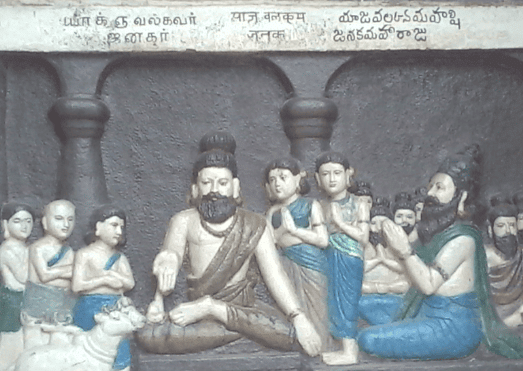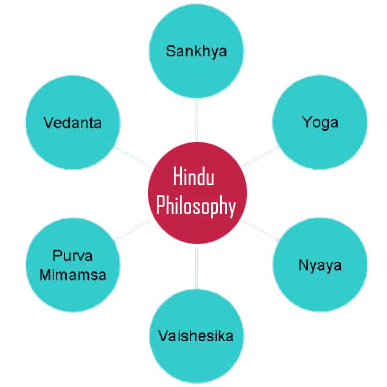Orthodox & Unorthodox Systems of Indian Philosophy | History Optional for UPSC PDF Download
Understanding Indian Philosophy: Vedas and Their Influence
The Vedas hold the distinction of being the oldest scriptures in the world. Indian philosophical systems are categorized based on their acceptance of the Vedas' authority.
The Orthodox Systems (Astika or Theistic)
- These systems are rooted in the belief that the Vedas are of divine origin. Adherents of these philosophies view the Vedas as having emanated from God. In this tradition, any system of thought not grounded in the Vedas, even if it includes a belief in God or gods, is considered atheistic (nastika).
Over time, the astika schools, originally known as sanatana dharma, have come to be collectively referred to as Hinduism.
The orthodox systems include:
- Vaisheshika
- Nyaya
- Samkhya
- Yoga
- Purva-Mimamsa
- Uttar-Mimamsa
It is common to see Purva-Mimamsa referred to simply as “Mimamsa” and Uttar-Mimamsa as “Vedanta.”

The Unorthodox Systems (Nastika or Atheistic)
These systems reject the authority of the Vedas. The unorthodox systems include:- Charvakism
- Ajivika
- Jainism
- Buddhism
While the orthodox systems uphold the supremacy of the Vedas, the unorthodox systems do not recognize their authority.
Interestingly, Vaisheshika, Nyaya, Samkhya, and Yoga are unique in that they neither strictly align with orthodox nor unorthodox views. These four systems, at their inception, did not explicitly accept or reject the Vedas.
Pairing of Orthodox Systems
The orthodox systems can be grouped into pairs:
- Nyaya-Vaisheshika
- Yoga-Samkhya
- Mimamsa-Vedanta
In each pair, the first system is more concerned with practical aspects, while the second system focuses on theoretical considerations.
Founders and Promoters of the Systems
Identifying a single founder or promoter for each system can be challenging. However, the following figures are widely recognized as proponents of these systems:
- Nyaya: Gautama
- Vaisheshika: Kanada
- Yoga: Patanjali
- Samkhya: Kapila
- Purva-Mimamsa: Jaimini
- Uttar-Mimamsa: Shamkara
Common Characteristics of Indian Philosophy
Indian philosophies, with the exception of Ajivikas and Charvakism, share several common characteristics. Charvakism stands out because it advocates for materialism, while the other systems exhibit the following shared traits:
Positive Impact on Life:
- All schools of thought emphasize that philosophy should have a beneficial impact on human life.
Importance of Purushartha:
- There is a general consensus on the significance of Purushartha, which refers to the goals of human life.
Ends of Human Life:
- All systems agree that philosophy should assist individuals in achieving the main goals of human life: artha (prosperity), kama (pleasure), dharma (righteousness), and moksha (liberation).
From Darkness to Light:
- Philosophy is seen as a means to guide individuals from darkness and ignorance to light and knowledge.
Verifiability of Truth and Reality:
- There is a consensus that truth and reality should be verifiable, supported by reasoning and experience. Experiences can be sensory, conceptual, or intuitional.
Conquering Ignorance and Attaining Freedom:
- All schools agree that human suffering stems from ignorance and that individuals can overcome ignorance to achieve total freedom (moksha) within their lifetime.
Essential Spirituality:
- There is a mutual agreement on the fundamental spirituality of human beings.
|
367 videos|995 docs
|
FAQs on Orthodox & Unorthodox Systems of Indian Philosophy - History Optional for UPSC
| 1. What are the main texts that constitute the Vedas, and what is their significance in Indian philosophy? |  |
| 2. What distinguishes Orthodox (Astika) systems of Indian philosophy from Unorthodox (Nastika) systems? |  |
| 3. Can you explain the common characteristics shared by both Orthodox and Unorthodox systems of Indian philosophy? |  |
| 4. How do the Vedas influence the development of the Orthodox systems of Indian philosophy? |  |
| 5. What role do the concepts of karma and dharma play in both Orthodox and Unorthodox Indian philosophies? |  |





















